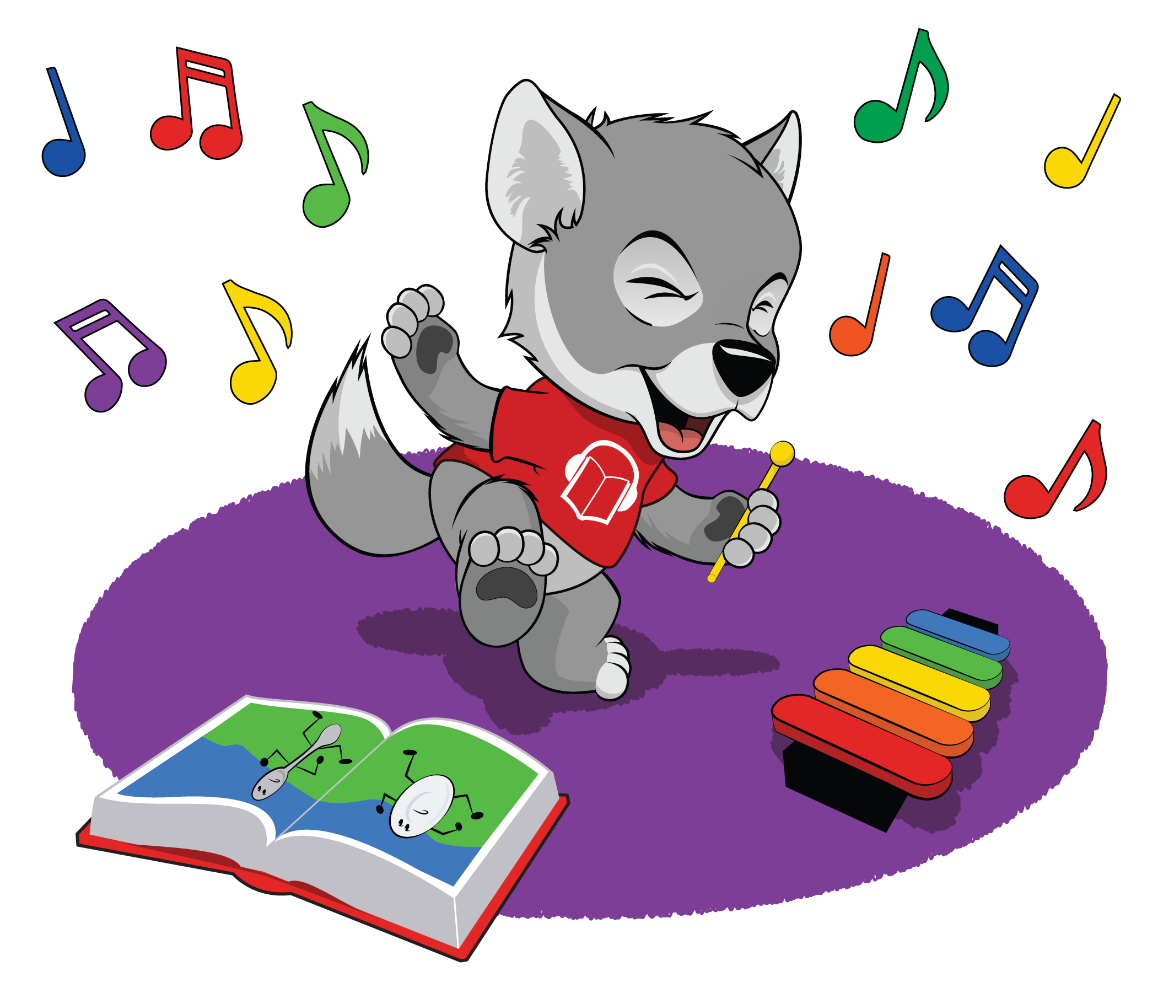That All Children May Read Early Literacy Program

About the Rhyming and Singing Skill
Rhyming and singing provides a natural and fun way to learn about language. Songs and rhyming stories provide children with the ability to break words apart and put them back together. Rhymes help children connect the sound a letter makes with the sound of the first letter of a word. Children learn that certain words rhyme and others do not.
Songs and rhyming books provide children with sensitivity to the sounds in words. Songs help children hear the smaller sounds in words since there are different musical notes for every syllable in a word. Singing encourages children to sound out words that have more than one syllable. The rhythm, movement, and exciting sounds of rhymes and songs all combine to bring your child closer to becoming a reader.
Rhyming and Singing Recommended Readings
Rhyming and Singing Activities
Babies (Birth through One)
- Sing a song like “Rock-a-Bye Baby” slowly to your baby. It doesn’t matter if you have a great voice or not. Singing slowly allows your baby to better hear each syllable of the word.
- Babies love when you play with their fingers and toes, so when playing with your baby’s toes say the “This Little Piggy” rhyme. Start with the big toe and move your way to the pinky toe. Don’t forget to tickle your baby as you go “wee, wee, wee, wee.” Make sure to introduce this rhyme slowly.
- Read a simple nursery rhyme like “Little Bo Peep” to your baby.
Toddlers (Two through Three)
- Sing “I’m a Little Teapot” with your toddler. Make sure to provide a teapot or cup before the song so they have an understanding of what a teapot looks like. As you introduce different parts of the teapot, let your toddler feel that part. For example, when mentioning “here is my handle,” let your toddler feel the handle of the teapot or cup. It may take a bit to learn the song, but once your toddler knows it, they will enjoy doing the song over and over again.
- Read or sing the “Five Little Monkeys” story. Let your toddler jump around when the monkeys jump on the bed. You could also have your toddler move their hand up and down and put each finger down as monkeys fall off the bed. Let your toddler feel your hand so they know how many fingers should be up or down.
- Read a book by Dr. Seuss. Dr. Seuss has many funny rhyming books that introduce your toddler to new and exciting words.
Preschoolers (Four through Six)
- Play “pat-a-cake” with your preschooler. This will take a bit of time for your preschooler to learn. Make sure to slowly introduce the song and guide their hands during the song. Don’t be discouraged if it takes a little longer to catch on.
- Sing “If You’re Happy and You Know It.” You could also read “If You’re Hoppy” by April Pulley Sayre. Whether you sing the song or read the book, let your preschooler interact by doing the actions. Make sure to join in the fun.
- Let your preschooler play with different types of kid-friendly instruments. If you don’t have any instruments, you can make maracas out of plastic eggs, rice, and duct tape. Fill the plastic egg with rice and tape it shut. Your preschooler will enjoy shaking the maracas while singing and dancing to favorite songs.